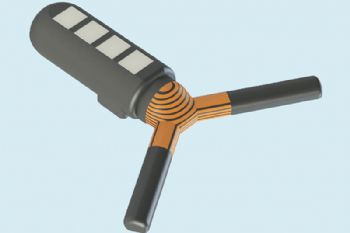
Researchers at MIT, the Charles Stark Draper Laboratory Inc and Brigham and Women’s Hospital have designed a 3-D printed ingestible capsule that can be controlled using Bluetooth wireless technology.
The capsule, which can be customised to deliver drugs, sense environmental conditions, or both, can reside in the stomach for at least a month, transmitting information and responding to instructions from a user’s smartphone.
The capsule could be used to deliver drugs to treat a variety of diseases, particularly in cases where drugs must be taken over a long period of time. It could also be designed to sense infections, allergic reactions or other events, and then release a drug in response.
Giovanni Traverso, a visiting scientist in MIT’s Department of Mechanical Engineering (
www.mit.edu), who will be joining the faculty this year, said: “Our system could provide closed-loop monitoring and treatment, whereby a signal can help to guide the delivery of a drug or tune the dose of a drug.”
Robert Langer, a member of MIT’s Koch Institute for Integrative Cancer Research, said: “We are excited about this demonstration of 3-D printing and of how ingestible technologies can help people through novel devices that facilitate mobile health applications.”
Langer and Traverso are the senior authors of the study, which appeared in the 13 December 2018 issue of Advanced Materials Technologies.
Yong Lin Kong, a former MIT ‘postdoc’ who is now an assistant professor at the University of Utah, is the paper’s lead author.
In 2016, the researchers designed a star-shaped capsule with six arms that fold up before being encased in a smooth capsule. After being swallowed, the capsule dissolves and the arms expand, allowing the device to lodge in the stomach.
Similarly, the new device unfolds into a Y-shape after being swallowed.
This enables it to remain in the stomach for about a month, before it breaks into smaller pieces and passes through the digestive tract.
To enable the manufacture of all of the complex elements used in these devices, the researchers decided to 3-D print the capsule, using alternating layers of stiff and flexible polymers, which helps it to withstand the acidic environment of the stomach.
Mr Kong said: “Multi-material 3-D printing is a highly versatile manufacturing technology.
“It can be used to create unique multi-component architectures and functional devices that cannot be fabricated by means of conventional manufacturing techniques.
“We can potentially create customised ingestible electronics, where the ‘time in stomach’ can be tailored for a specific medical application.”